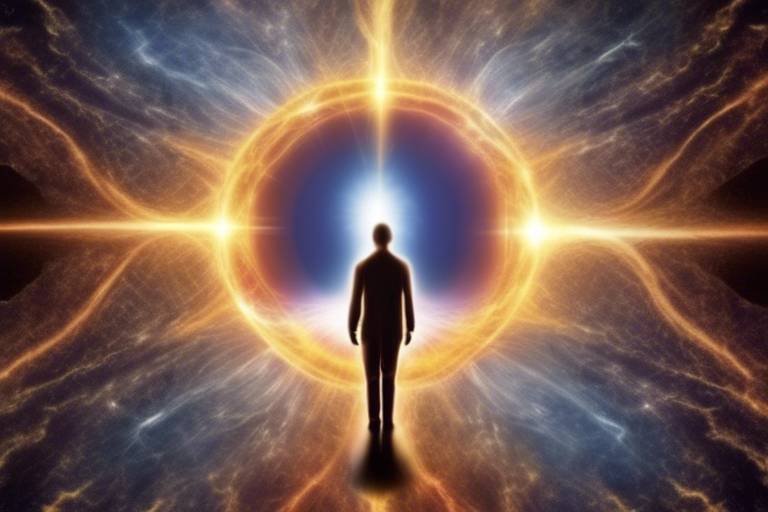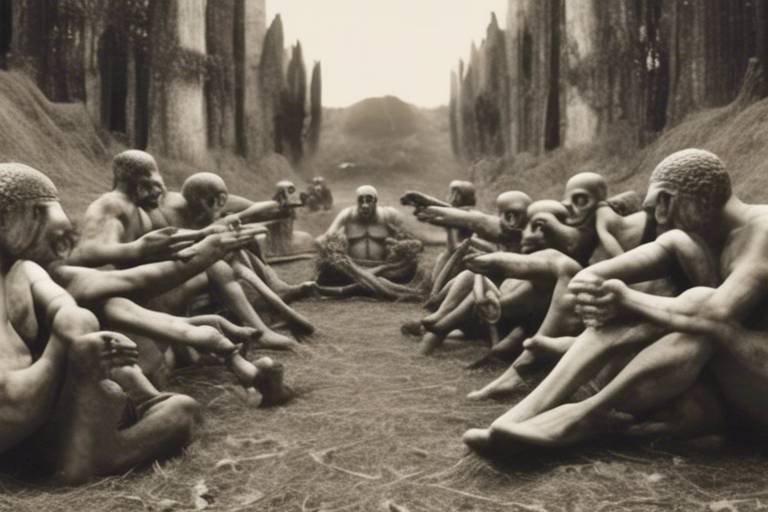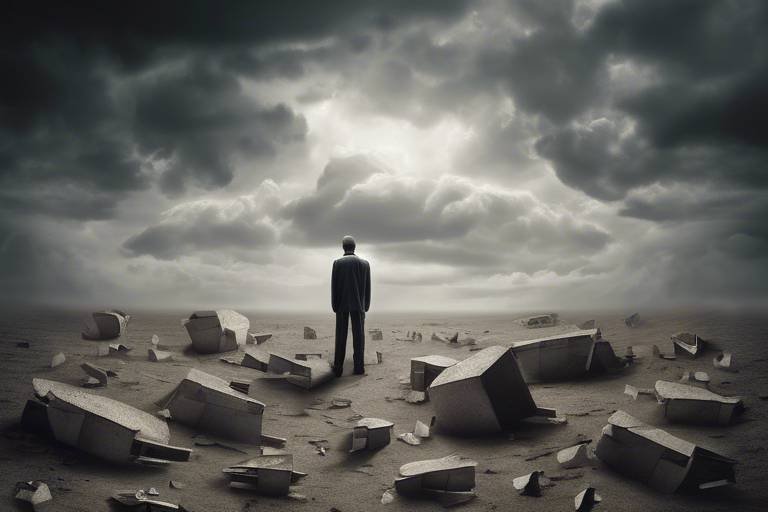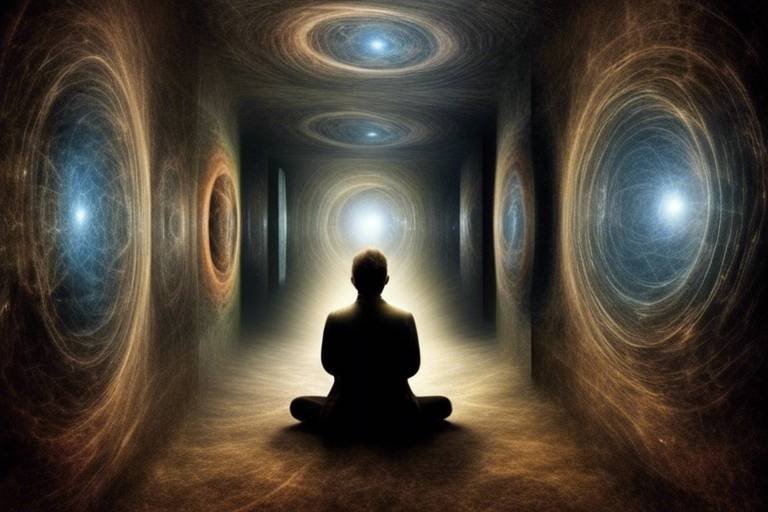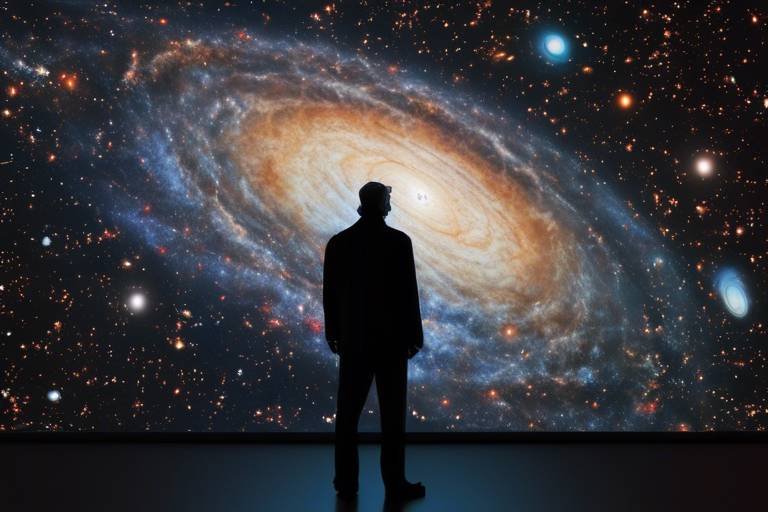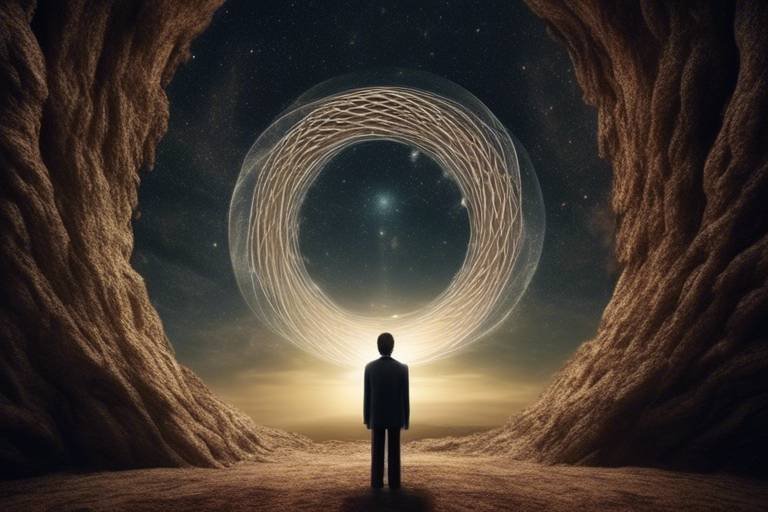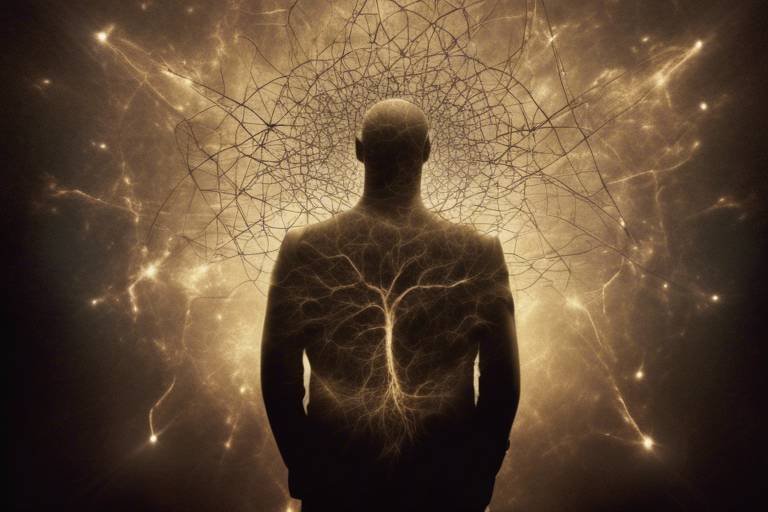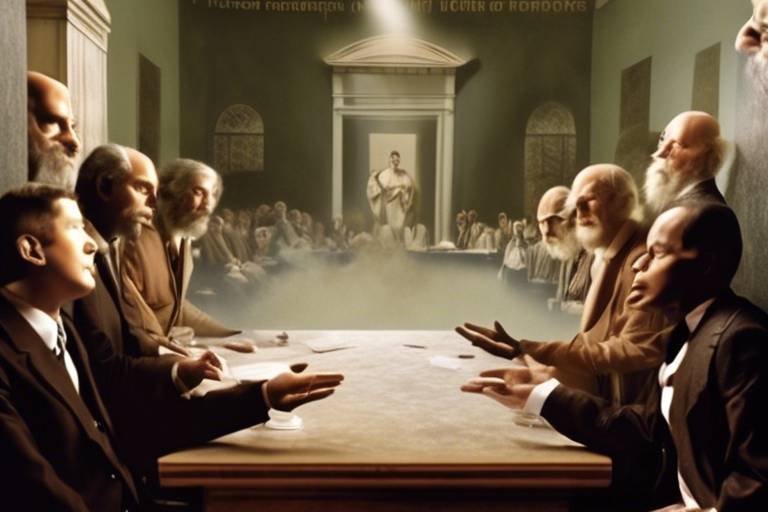Metaphysics and the Understanding of Energy
Energy is a concept that transcends mere scientific definitions; it weaves through the fabric of our reality, influencing everything from the smallest particles to the vast cosmos. When we think about metaphysics, we often envision a realm filled with abstract ideas, yet it is here that we can find profound insights into the nature of energy. In this exploration, we will embark on a journey that intertwines philosophical thought with the understanding of energy, revealing how these two domains illuminate each other.
At its core, metaphysics seeks to answer the fundamental questions about existence, reality, and the universe. It challenges us to ponder: What is the essence of energy? How does it interact with the physical world? These inquiries are not merely academic; they resonate with our everyday experiences and the mysteries of life itself. When we consider energy through a metaphysical lens, we begin to see it not just as a measurable quantity, but as a dynamic force that shapes our very being.
Imagine energy as a river, flowing through the landscape of existence. This river connects all things, from the tiniest atom to the grandest galaxy. In this sense, energy is not just a physical phenomenon; it embodies the interconnectedness of all life. It is the pulse of the universe, a reminder that everything is in constant motion and transformation. Just as a river can carve out canyons over time, energy can shape our reality, influencing our thoughts, emotions, and actions.
As we delve deeper into the relationship between metaphysics and energy, it becomes clear that our understanding is enriched by various philosophical perspectives. By examining the ideas of ancient thinkers like Aristotle and Plato, we can appreciate how their insights continue to resonate in contemporary discussions about energy. Furthermore, modern metaphysical theories, influenced by advancements in quantum physics, challenge traditional notions of reality and invite us to reconsider the very nature of energy itself.
In summary, the intersection of metaphysics and energy offers a rich tapestry of understanding that invites us to explore the depths of existence. By recognizing energy as both a physical and metaphysical concept, we open ourselves to new possibilities and insights that can transform our perception of reality.
- What is the relationship between energy and metaphysics?
Energy is seen as a fundamental force that connects all aspects of existence, influencing both physical and metaphysical realms. - How do ancient philosophies view energy?
Philosophers like Aristotle and Plato offered foundational ideas about energy, linking it to concepts of motion and ideal forms. - What modern theories challenge traditional views of energy?
Insights from quantum physics have led to contemporary metaphysical theories that redefine our understanding of energy and reality. - How is energy perceived in Eastern philosophies?
Eastern traditions like Chinese and Indian philosophies view energy as a vital life force, integral to health and the interconnectedness of all living things.

The Nature of Energy
Energy is one of those concepts that seems deceptively simple at first glance, yet it unfolds into a vast tapestry of meanings and interpretations as we dig deeper. At its core, energy can be defined as the capacity to do work, but that definition barely scratches the surface. It manifests in various forms, such as kinetic, potential, thermal, and even chemical energy. Just think of energy as the *glue* that holds the universe together, constantly transforming and transferring between different states. It’s like a dance where every partner—be it a molecule, a planet, or a thought—plays a role in the grand performance of existence.
In the physical universe, energy is a measurable quantity, often described by the laws of thermodynamics. For instance, one of the most famous principles, the law of conservation of energy, states that energy cannot be created or destroyed; it can only change forms. This means that when you eat food, the chemical energy stored in those nutrients is converted into kinetic energy when you run or jump. Isn’t it fascinating how energy flows through our lives in such a seamless way?
However, the story of energy doesn’t end with physics. When we step into the realm of metaphysics, the concept of energy takes on a more abstract and philosophical dimension. Here, energy transcends mere physicality and becomes intertwined with consciousness, intention, and the very fabric of reality itself. Many metaphysical theories suggest that everything in the universe is composed of energy vibrating at different frequencies. This idea invites us to consider how our thoughts and emotions might influence the energy around us, creating a ripple effect that impacts not only our lives but also the collective experience of humanity.
To illustrate this dual nature of energy, we can categorize it into two broad perspectives: physical energy and metaphysical energy. Here’s a quick comparison:
| Aspect | Physical Energy | Metaphysical Energy |
|---|---|---|
| Definition | Quantifiable and measurable | Abstract and qualitative |
| Forms | Kinetic, potential, thermal, etc. | Qi, Prana, spiritual energy |
| Influence | Directly affects physical systems | Affects consciousness and reality perception |
This table highlights how energy can be perceived through different lenses, each offering unique insights into its nature. As we explore the metaphysical aspects of energy, we begin to understand its profound implications on our existence. For instance, when we talk about Qi in Chinese philosophy or Prana in Indian philosophy, we are acknowledging that energy is not just a physical phenomenon but a vital force that connects us all. It’s as if we’re all part of an intricate web, each thread vibrating with its own unique frequency, yet contributing to a larger symphony of existence.
In conclusion, the nature of energy is a complex interplay between the tangible and the intangible. Whether we’re measuring it in joules or contemplating its metaphysical significance, energy remains a fundamental aspect of our understanding of the universe. It’s a reminder that we are not just passive observers in this grand cosmic dance; we are active participants, shaping and being shaped by the energy that surrounds us.

Philosophical Perspectives on Energy
When we talk about energy, we often think of it in terms of physics—like electricity or kinetic energy. But what if I told you that energy is also a profound philosophical concept? Various schools of thought have tackled the idea of energy, each offering unique interpretations that shape our understanding of existence and reality. From ancient philosophers to modern thinkers, the perspectives on energy are as diverse as they are fascinating. Imagine energy not just as a force, but as a fundamental aspect of being, influencing everything from the cosmos to our daily lives.
In classical philosophy, energy was often linked to motion and change. Thinkers like Aristotle and Plato laid the groundwork for how we perceive energy today. Aristotle viewed energy as a driving force behind motion, while Plato took a more abstract approach, suggesting that energy connects to a higher realm of ideal forms. This duality between the tangible and the intangible continues to spark debates among philosophers and scientists alike.
Fast forward to modern metaphysical theories, and we see a shift in how energy is defined. Quantum physics has opened up a whole new world of understanding, challenging the traditional views that have dominated for centuries. The idea that energy can exist in multiple states and that it is interconnected with consciousness blurs the lines between the physical and metaphysical realms. This shift invites us to reconsider our place in the universe and how we interact with the energies around us.
To better illustrate these philosophical perspectives, let’s break down some key viewpoints:
- Classical Philosophy: Focuses on energy as a physical force, emphasizing motion and change.
- Modern Metaphysical Theories: Redefine energy through the lens of quantum mechanics, suggesting a more interconnected reality.
- Eastern Philosophies: Introduce concepts like Qi and Prana, emphasizing energy as a life force that permeates existence.
These perspectives not only deepen our understanding of energy but also challenge us to think critically about how we define reality. Are we merely physical beings, or is there a deeper energy that connects us all? The exploration of energy through these philosophical lenses encourages a broader view of existence, one that encompasses both the seen and the unseen.
- What is the philosophical definition of energy? Philosophically, energy is seen not just as a physical force but as a fundamental aspect of reality that influences existence and consciousness.
- How do classical philosophers view energy? Classical philosophers like Aristotle viewed energy as a driving force behind motion and change, while Plato connected it to ideal forms beyond physical reality.
- What impact does quantum physics have on our understanding of energy? Quantum physics challenges traditional notions of energy, suggesting that it can exist in multiple states and is interconnected with consciousness.

Classical Philosophy
Classical philosophy has laid the groundwork for our understanding of many complex concepts, including the notion of energy. Think about it: ancient thinkers like Aristotle and Plato were not just pondering the stars; they were grappling with the very essence of existence and change. Their ideas about energy are not just historical footnotes; they resonate through the ages, influencing how we perceive the universe today.
At the heart of Aristotle's philosophy is the concept of motion, which he believed was a fundamental aspect of reality. He proposed that everything in the universe is in a constant state of change, driven by a force he described as energy. For Aristotle, energy was not merely a physical quantity; it was the catalyst for transformation. He famously stated that "motion is the actuality of a potentiality," suggesting that energy is what brings potential into reality. This perspective invites us to consider how our own lives are filled with potential waiting to be activated by our choices and actions.
On the other hand, we have Plato, who took a more abstract approach. His theory of ideal forms suggests that the physical world is merely a shadow of a higher reality. In this framework, energy transcends mere physical manifestations. Plato posited that true reality lies in the realm of ideas, which are eternal and unchanging. This leads us to ponder: if energy exists in a metaphysical sense, could it be that our understanding of it is limited by our physical experiences? Plato’s ideal forms challenge us to look beyond the tangible and consider the deeper energies that shape our existence.
To illustrate the differences between these two philosophers, let’s take a look at the following table:
| Philosopher | Concept of Energy | Key Idea |
|---|---|---|
| Aristotle | Energy as Motion | Energy is the force behind change and existence. |
| Plato | Energy as Ideal Forms | True energy transcends physical reality, existing in a realm of ideas. |
Both philosophers prompt us to ask profound questions about the nature of energy. Is it something we can quantify, or is it an abstract concept that connects us to a higher reality? Their contrasting views encourage a dialogue that spans centuries, bridging the gap between the physical and metaphysical.
As we dive deeper into the realm of classical philosophy, we uncover layers of meaning that challenge our everyday perceptions of energy. It’s not just about electricity or kinetic energy; it’s about understanding the forces that drive change in our lives and the universe. This exploration of energy through the lens of classical thinkers enriches our understanding and invites us to reflect on our own relationship with the world around us.

Aristotle's Concept of Motion
Aristotle, one of the towering figures of ancient philosophy, had a profound understanding of motion that intertwines with his broader views on energy. For him, motion was not merely about the physical movement of objects; it represented a fundamental aspect of existence itself. He believed that everything in the universe is in a constant state of change, and this change is driven by energy. Aristotle categorized motion into four types: change of place, change of quality, change of quantity, and generation and corruption. Each of these categories illustrates how energy manifests in various forms and influences the world around us.
At the heart of Aristotle's philosophy is the idea of potentiality and actuality. He posited that all entities possess potential energy, which is the inherent ability to change or develop into something else. This potential energy can only be realized through actualization, which is the process of becoming something distinct. For instance, consider a seed; it has the potential to grow into a tree, but it requires the right conditions—like soil, water, and sunlight—to actualize that potential. In this analogy, the seed's potential energy is akin to the latent energy within all beings, waiting for the right circumstances to unleash its full power.
Aristotle's concept of motion also includes the idea of a mover—an entity that initiates change. He argued that nothing moves itself; rather, it requires an external force to instigate motion. This aligns with his view of the cosmos as a hierarchy of beings, where each level of existence influences the one below it. For example, a stone does not leap into the air on its own; it needs a person to throw it. This relational aspect of motion and energy suggests a deeply interconnected universe, where everything is linked through a web of cause and effect.
Moreover, Aristotle emphasized the importance of final causes—the purpose or end for which something exists. This idea can be illustrated through the lifecycle of an organism. A butterfly, for instance, undergoes a metamorphosis that is not just a random series of changes but a purposeful journey toward becoming a mature butterfly. In this sense, energy is not just a force but a guiding principle that directs the motion of all things toward their ultimate purpose.
In summary, Aristotle's concept of motion is a rich tapestry that weaves together the ideas of potentiality, actuality, and purpose. He viewed energy as the driving force behind all change, emphasizing that our understanding of motion is essential to grasping the nature of reality itself. As we explore the metaphysical implications of energy, Aristotle’s insights continue to resonate, inviting us to reflect on how we perceive change and existence in our own lives.
- What is Aristotle's view on energy? Aristotle believed that energy is the driving force behind motion and change, existing as potentiality that can be actualized.
- How does Aristotle define motion? He categorizes motion into four types: change of place, change of quality, change of quantity, and generation and corruption.
- What is the significance of potentiality and actuality in Aristotle's philosophy? These concepts illustrate that all beings have inherent potential energy that can only be realized through actualization, emphasizing the interconnectedness of existence.

Plato's Ideal Forms
When we dive into the depths of Plato's philosophy, we encounter the fascinating concept of Ideal Forms. Plato proposed that beyond our tangible world lies a realm of perfect, unchanging forms or ideas, which he believed to be the true essence of reality. These Ideal Forms are not just abstract notions; they represent the ultimate reality that physical objects strive to emulate. For instance, think about the concept of a "circle." In our physical world, no circle is perfectly round; however, the Ideal Form of a circle exists in the realm of forms, embodying perfection. This idea extends to all aspects of existence, including the notion of energy.
In Plato's view, the physical world is merely a shadow of this higher reality, where these Ideal Forms exist. So, when we talk about energy, Plato would argue that what we perceive as energy in our physical universe is just a reflection of a more profound, metaphysical energy that is constant and unchanging. This perspective invites us to reconsider how we understand energy—not just as something that powers our daily lives but as a manifestation of a deeper, more significant reality.
Moreover, Plato's Ideal Forms suggest that everything in our universe is interconnected through these forms. Just as a physical object is a mere imitation of its Ideal Form, our understanding of energy is also limited by our physical experiences. This raises intriguing questions: What if the energy we harness and utilize in our lives is just a fraction of a greater, metaphysical energy that governs the universe? Plato would encourage us to look beyond the surface and seek the underlying essence of energy, prompting a deeper exploration into its nature.
To illustrate this connection, consider the following table that summarizes how Plato's Ideal Forms relate to our understanding of energy:
| Aspect | Physical World | Ideal Forms |
|---|---|---|
| Nature of Reality | Imperfect and transient | Perfect and eternal |
| Energy | Observable and measurable | Underlying and metaphysical |
| Understanding | Limited by sensory experiences | Expanded through philosophical inquiry |
In conclusion, Plato's Ideal Forms challenge us to rethink our understanding of energy. By recognizing that our physical experiences are mere reflections of a deeper reality, we can begin to appreciate the profound connections between energy, existence, and the universe. This philosophical lens not only enriches our comprehension of energy but also invites us to explore the mysteries that lie beyond what we can see and measure. So, the next time you think about energy, remember: there's a whole realm of Ideal Forms just waiting to be discovered!
- What are Plato's Ideal Forms? Ideal Forms are perfect, unchanging concepts that represent the true essence of reality, beyond our physical world.
- How do Ideal Forms relate to energy? Plato suggests that the energy we perceive is just a shadow of a deeper, metaphysical energy that embodies the Ideal Forms.
- Why is understanding Ideal Forms important? It helps us to see beyond the surface of reality and appreciate the interconnectedness of all things, including energy.

Modern Metaphysical Theories
In the realm of , the understanding of energy has undergone a significant transformation, especially with the advent of quantum physics. These contemporary insights challenge traditional notions of reality, suggesting that energy is not merely a physical phenomenon but a fundamental aspect of existence itself. Imagine energy as the fabric of the universe, woven through every atom and particle, connecting everything in a delicate dance of existence. This perspective opens up a plethora of questions about the nature of reality and our place within it.
One of the most intriguing aspects of modern metaphysical theories is the idea that energy exists in various forms, each influencing our reality in profound ways. For instance, the concept of non-locality in quantum physics suggests that particles can be connected across vast distances, challenging our conventional understanding of space and time. This phenomenon can be likened to a cosmic web, where every thread of energy is interconnected, transcending physical limitations. It poses an exciting question: if energy can exist beyond the constraints of locality, what does that mean for our understanding of consciousness and existence?
Furthermore, theories such as string theory introduce the idea that the fundamental building blocks of the universe are not particles but tiny vibrating strings of energy. Each vibration corresponds to a different particle, suggesting that energy is the core essence of all matter. This leads us to ponder the implications of energy on our perception of reality. Are we merely observers in a grand symphony of vibrations, or do our thoughts and intentions shape the energy around us?
Modern metaphysical theorists also explore the idea of consciousness as a form of energy. This perspective posits that consciousness is not just a byproduct of brain activity but an integral part of the universe's energy matrix. Just as energy can neither be created nor destroyed, consciousness may also persist beyond physical existence. This brings to mind the age-old question: what happens to our consciousness after we die? Are we simply transformed into another form of energy, continuing our journey in an interconnected universe?
To better illustrate the intersection of modern metaphysics and energy, consider the following table that summarizes key theories and their implications:
| Theory | Key Concept | Implications |
|---|---|---|
| Quantum Physics | Non-locality | Interconnectedness of all particles |
| String Theory | Vibrating strings as fundamental | Energy as the essence of matter |
| Consciousness as Energy | Consciousness transcends physicality | Potential for continuity beyond physical life |
As we delve deeper into these theories, it becomes clear that modern metaphysical perspectives on energy not only challenge our understanding of the physical universe but also invite us to explore the nature of our own existence. They encourage us to consider how our thoughts, intentions, and consciousness might interact with the vast energy field that surrounds us. In this light, we are not just passive observers but active participants in the cosmic dance of energy.
- What is the relationship between energy and consciousness? Modern theories suggest that consciousness may be a form of energy, influencing and interacting with the energy around us.
- How does quantum physics change our understanding of reality? Quantum physics introduces concepts like non-locality, suggesting that everything is interconnected beyond conventional physical boundaries.
- What is string theory? String theory posits that the fundamental components of the universe are tiny vibrating strings, redefining our understanding of matter and energy.
- Can energy exist beyond physical forms? Yes, many modern metaphysical theories propose that energy, including consciousness, can transcend physical existence and continue in different forms.

Energy in Eastern Philosophies
When we dive into the rich tapestry of Eastern philosophies, we encounter a profound understanding of energy that transcends mere physicality. Concepts such as Qi in Chinese philosophy and Prana in Indian philosophy illustrate how energy is perceived not just as a scientific principle, but as a vital life force that connects all living beings. These philosophies invite us to see energy as a dynamic and ever-present essence, flowing through the universe and influencing our health, emotions, and spiritual well-being.
In Chinese philosophy, the concept of Qi (or Chi) is fundamental. It is often described as the life force or vital energy that flows through everything—from the air we breathe to the food we consume. Qi is not just a static entity; it is dynamic and constantly changing, embodying the principles of balance and harmony. The ancient practice of Tai Chi and traditional Chinese medicine (TCM) revolve around the cultivation and balance of Qi. Practitioners believe that when Qi flows freely, individuals experience optimal health and well-being. However, blockages or imbalances in Qi can lead to physical and emotional ailments, emphasizing the importance of maintaining this energy flow.
Similarly, in Indian philosophy, the term Prana represents the vital life force that sustains all living beings. Prana is often associated with breath, as it is believed that the act of breathing not only nourishes the body but also enhances the flow of energy within. Yoga, a practice deeply rooted in Indian philosophy, emphasizes the significance of Prana through various techniques, including Pranayama, which focuses on breath control. This practice aims to harmonize the body, mind, and spirit, allowing individuals to tap into the universal energy that surrounds them. Just as Qi connects all things in Chinese thought, Prana serves as the thread that weaves through the fabric of existence in Indian philosophy.
Both Qi and Prana signify a broader understanding of energy that extends beyond the physical realm. They embody the idea that everything in the universe is interconnected, and that our individual energies are part of a greater whole. This perspective encourages us to cultivate awareness of our own energy, promoting practices that enhance our physical and spiritual health. Whether through meditation, martial arts, or yoga, the Eastern philosophies remind us that energy is not just something we possess but something we can actively engage with and transform.
To illustrate the differences and similarities between Qi and Prana, let’s take a look at the following table:
| Aspect | Qi (Chinese Philosophy) | Prana (Indian Philosophy) |
|---|---|---|
| Definition | Vital energy that flows through all living things | Life force that sustains all beings |
| Practices | Tai Chi, Qigong, Traditional Chinese Medicine | Yoga, Pranayama, Ayurveda |
| Focus | Balance and harmony of energy | Breath control and spiritual connection |
| Interconnectedness | Emphasizes harmony with nature | Highlights the unity of body, mind, and spirit |
In conclusion, the exploration of energy within Eastern philosophies offers a fascinating lens through which we can understand our existence. By recognizing and nurturing the flow of Qi and Prana, we open ourselves to a holistic approach to health and spirituality. These concepts challenge us to see energy not just as a scientific phenomenon but as a fundamental aspect of our being that deserves attention and respect.
- What is Qi? Qi is the vital energy that flows through all living things, essential for health and balance in Chinese philosophy.
- What is Prana? Prana is the life force in Indian philosophy, associated with breath and vital for spiritual and physical well-being.
- How can I cultivate Qi or Prana? Practices such as Tai Chi, Qigong, yoga, and breathing exercises can help cultivate and balance these energies.
- Are Qi and Prana the same? While they share similarities in representing life force, they are rooted in different cultural and philosophical contexts.

Qi in Chinese Philosophy
In the rich tapestry of Chinese philosophy, the concept of Qi (or Chi) stands out as a fundamental principle that embodies the essence of life and the universe. Qi is often described as the vital life force that flows through all living things, connecting them to the cosmos and each other. Imagine it as the invisible thread weaving through the fabric of existence, binding everything in a harmonious dance of energy. This idea isn't just abstract; it has practical implications in various aspects of life, including health, spirituality, and the very way we perceive our place in the universe.
Qi is not merely a concept but a dynamic force that influences our physical and mental well-being. In traditional Chinese medicine, for instance, the balance of Qi is believed to be crucial for maintaining health. When Qi flows freely, the body is healthy; when it gets blocked, illness can occur. This principle is the foundation of practices like acupuncture and Tai Chi, which aim to harmonize the flow of Qi within the body. Picture your body as a river; when the water flows smoothly, everything is vibrant and alive. However, when that river gets dammed up, stagnation and problems arise.
Moreover, the concept of Qi extends beyond individual health to encompass the interconnectedness of all living beings. In Chinese philosophy, everything in the universe is seen as interrelated, and Qi is the medium through which this connection is realized. This perspective encourages a holistic view of life, where the well-being of one affects the well-being of all. It’s like being part of a grand orchestra; if one musician is out of tune, it disrupts the harmony of the entire piece.
In addition to its implications for health and interconnectedness, Qi also plays a significant role in martial arts, where practitioners harness and direct this energy to enhance their physical abilities and achieve greater levels of focus and discipline. The training often involves not just physical exercises but also meditation and breath control, emphasizing the importance of cultivating Qi for both personal development and self-defense.
To further illustrate the significance of Qi in Chinese philosophy, consider the following table that highlights its various aspects:
| Aspect | Description |
|---|---|
| Health | Qi is essential for maintaining physical and mental well-being. |
| Interconnectedness | Qi connects all living beings, emphasizing a holistic view of existence. |
| Martial Arts | Qi is harnessed to enhance physical abilities and focus in martial practices. |
| Spirituality | Qi plays a role in spiritual practices, promoting inner peace and balance. |
In conclusion, Qi is much more than just a philosophical idea; it is an integral part of the Chinese worldview that influences various domains of life. By understanding and cultivating Qi, individuals can unlock a deeper connection to themselves, others, and the universe. This ancient wisdom continues to resonate today, inviting us to explore the profound energy that flows through all aspects of existence.
- What is Qi? Qi is the vital life force that flows through all living things, connecting them to the universe.
- How does Qi affect health? A balanced flow of Qi is essential for maintaining physical and mental well-being.
- Can Qi be cultivated? Yes, practices like Tai Chi and meditation help cultivate and balance Qi.
- What role does Qi play in martial arts? Qi is harnessed to enhance physical abilities and focus in martial practices.

Prana in Indian Philosophy
When we dive into the rich tapestry of Indian philosophy, one term that resonates deeply is Prana. This concept is not merely a word; it embodies the very essence of life itself. In many ways, Prana can be likened to the invisible thread that weaves through the fabric of existence, connecting all living beings and the universe at large. But what exactly is Prana, and why is it so pivotal in understanding our existence?
At its core, Prana is often translated as "life force" or "vital energy." This energy is believed to permeate everything, from the smallest blade of grass to the vastness of the cosmos. In traditional Indian medicine, particularly in Ayurveda, Prana is considered crucial for health and well-being. When Prana flows freely within an individual, they experience vitality and balance. Conversely, when this energy is blocked or diminished, it can lead to physical and emotional ailments.
In yoga and meditation practices, harnessing Prana is fundamental. Techniques such as Pranayama—the control of breath—are designed to regulate this vital energy. By mastering the breath, practitioners learn to enhance their Prana, leading to improved mental clarity and physical health. It’s fascinating to think of breath as a bridge between the physical and metaphysical realms, isn't it? Each inhalation draws in life, while each exhalation releases what no longer serves us.
To further understand Prana, it helps to explore its classification. In Indian philosophy, Prana is often divided into five distinct types, known as the Pancha Pranas. Each type governs different functions within the body:
| Type of Prana | Function |
|---|---|
| Prana | Inhalation, governs heart and lungs |
| Apana | Exhalation, responsible for elimination and reproduction |
| Samana | Digestion and metabolism |
| Udana | Speech and expression |
| Vyana | Circulation and movement throughout the body |
This classification reveals how Prana is intricately linked to our physical, emotional, and spiritual well-being. The balance and harmony of these energies are essential for a fulfilling life. When we consider Prana in this holistic manner, it becomes clear that our well-being is not just a matter of physical health but also involves emotional and spiritual dimensions.
Moreover, the concept of Prana extends beyond individual health. It speaks to the interconnectedness of all life. In the grand tapestry of existence, every being contributes to the flow of Prana, creating a dynamic exchange that sustains the universe. This idea is beautifully illustrated in the ancient Indian texts, where the universe is often described as a living organism, pulsating with energy.
In conclusion, Prana is not just a concept but a profound understanding of life itself in Indian philosophy. It invites us to explore the depths of our existence, urging us to cultivate and respect the energies that flow through us and around us. As we embrace the significance of Prana, we can begin to appreciate the intricate dance of life, where every breath we take connects us to the universe and to one another.
- What is Prana? Prana is considered the vital life force or energy that permeates all living beings and the universe.
- How is Prana related to health? A balanced flow of Prana is essential for physical, emotional, and spiritual well-being.
- What are the Pancha Pranas? The Pancha Pranas are five types of Prana that govern different functions in the body, including inhalation, digestion, and circulation.
- How can I harness Prana? Techniques such as Pranayama (breath control) in yoga can help enhance and regulate Prana.
Frequently Asked Questions
- What is the definition of energy in metaphysics?
Energy in metaphysics refers to the fundamental force that drives change and existence. It encompasses both physical energy, like kinetic and potential energy, and metaphysical energy, which is often seen as a vital force that connects all living things.
- How do classical philosophers view energy?
Classical philosophers like Aristotle and Plato had unique perspectives on energy. Aristotle viewed it as a driving force behind motion and change, while Plato related energy to his theory of ideal forms, suggesting that true reality transcends the physical and connects to a higher metaphysical energy.
- What are some modern interpretations of energy?
Modern metaphysical theories often incorporate insights from quantum physics, challenging traditional notions of reality. These interpretations suggest that energy is not just a physical phenomenon but also a fundamental aspect of existence that influences consciousness and reality.
- What is Qi in Chinese philosophy?
Qi, or Chi, is a vital energy that flows through all living things in Chinese philosophy. It is believed to be essential for health and balance, emphasizing the interconnectedness of all beings and the importance of harmony within the body and the universe.
- How is Prana understood in Indian philosophy?
Prana represents the vital life force in Indian philosophy and is a key concept in yoga. It is thought to permeate the universe and is essential for life, health, and spiritual growth, reflecting the connection between body, mind, and spirit.

